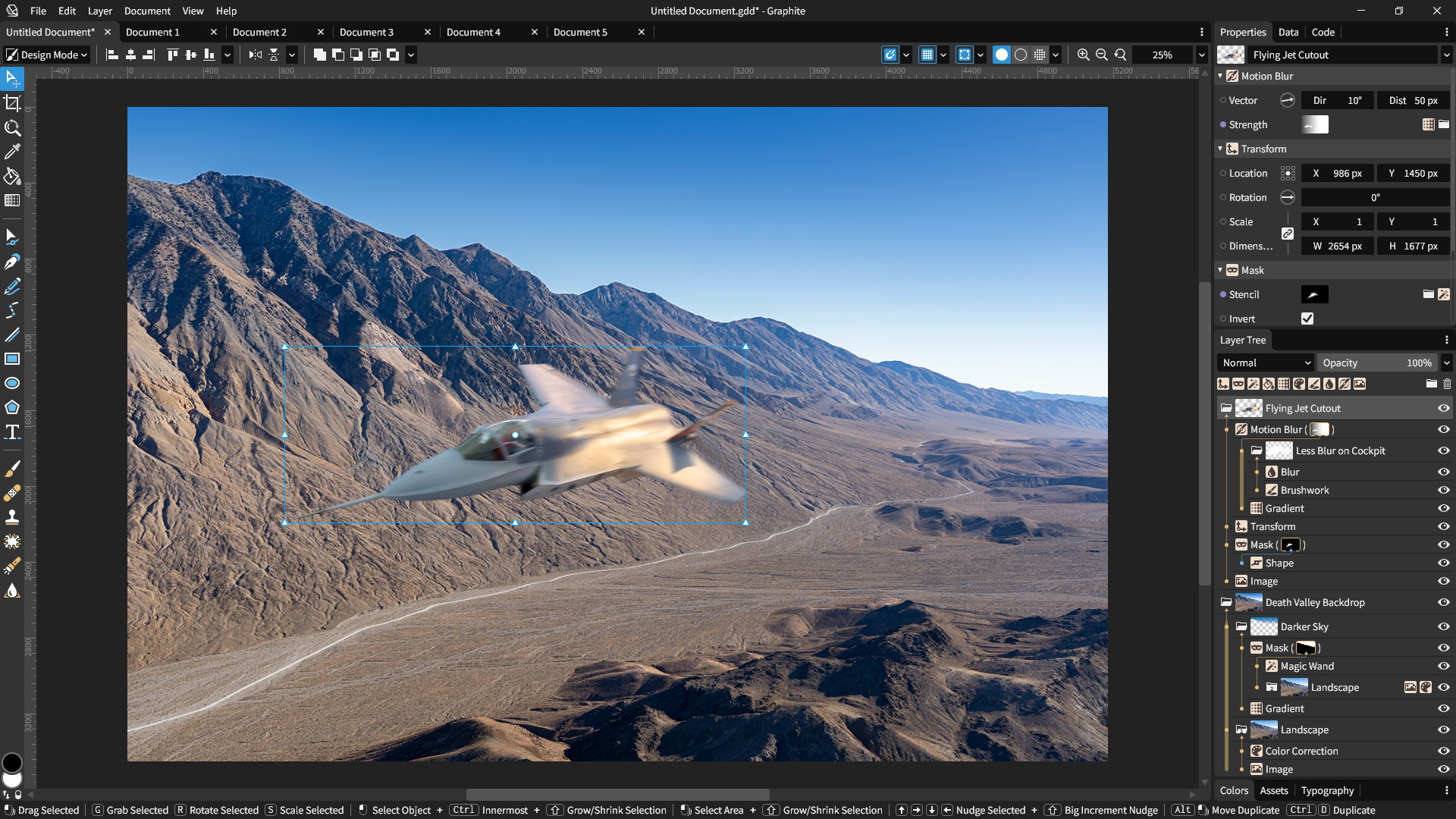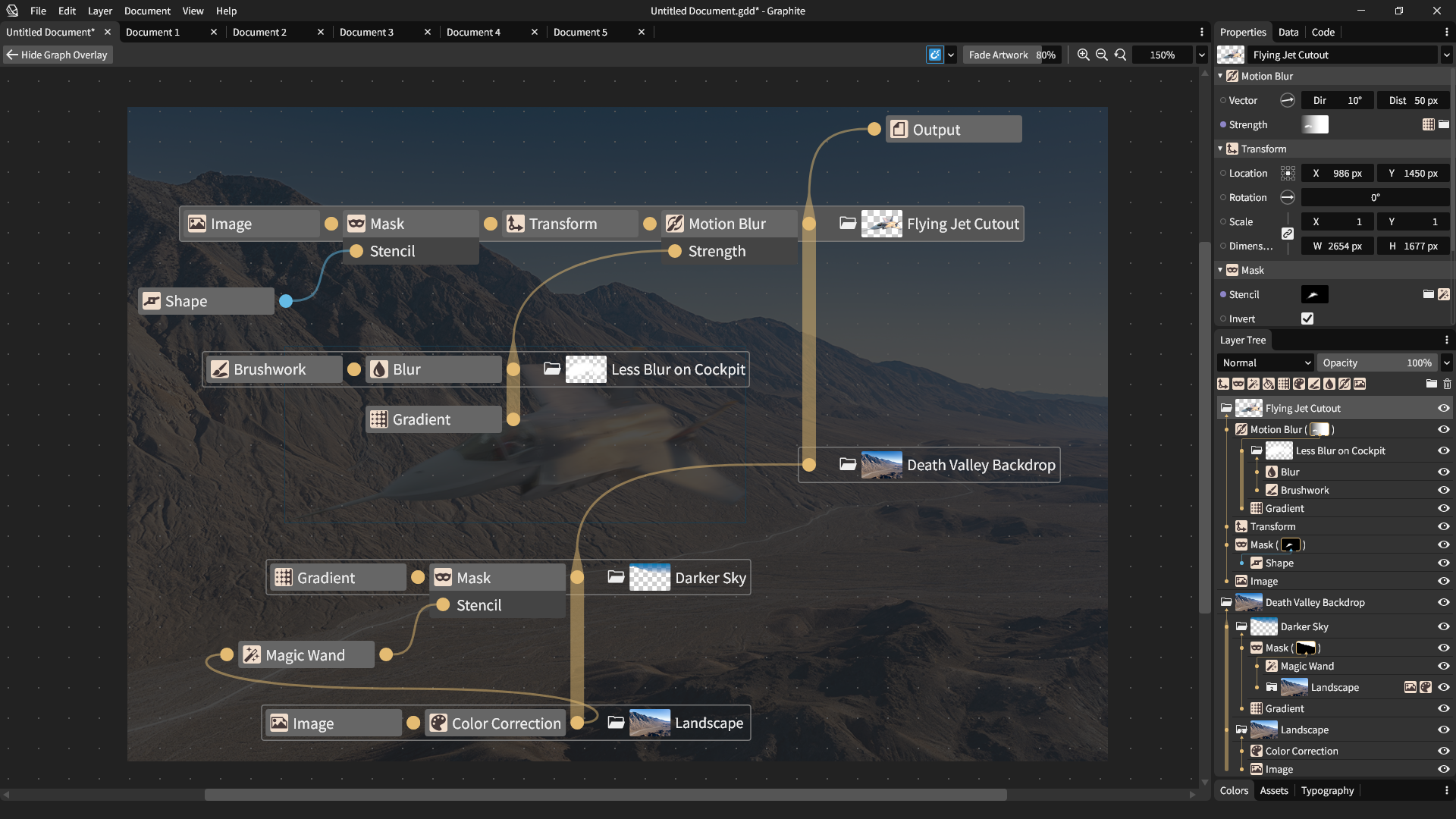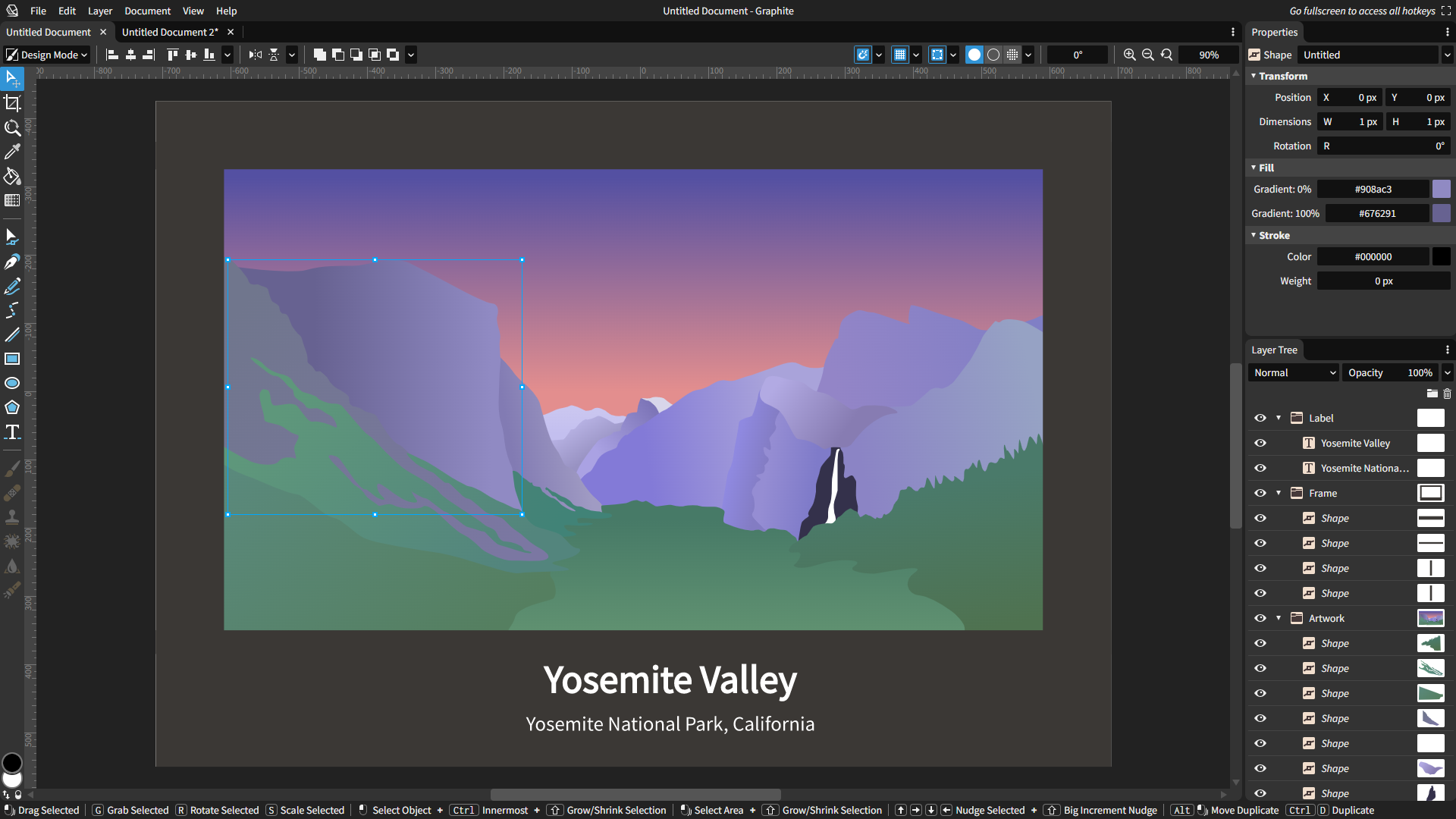

Redefining state-of-the-art graphics editing.
source link: https://graphite.rs/
Go to the source link to view the article. You can view the picture content, updated content and better typesetting reading experience. If the link is broken, please click the button below to view the snapshot at that time.


Redefining state-of-the-art graphics editing.
Graphite is an in-development raster and vector 2D graphics editor that is free and open source. It is powered by a node graph compositing engine that supercharges your layer stack, providing a completely non-destructive editing experience.



Viewport interface mockup showcasing a photo editing project that utilizes Graphite's raster graphics pipeline, one of the upcoming roadmap milestones. Raster editing is not yet supported.

Professional 2D content creation for everyone.
With great power comes great accessibility. Graphite is built on the belief that the best creative tools can be powerful and within reach of all.
Graphite is designed with a friendly and intuitive interface where a delightful user experience is of first-class importance. It is available for free under an open source license and usable instantly through a web browser or an upcoming native client on Windows, Mac, and Linux.
The accessible design of Graphite does not sacrifice versatility for simplicity. The node-based workflow (coming soon) will open doors to an ecosystem of powerful capabilities catering to the casual and professional user alike, encompassing a wide set of use cases at every skill level.

Available now for alpha testing.
One year ago, Graphite was merely an idea. Today, the first milestone of the alpha release series is available for testing.
Milestone 1 focused on building an editor interface with basic vector design and illustration tools. Now the alpha release series moves toward Milestone 2: developing a novel node-based vector graphics workflow. After that, raster graphics and more are planned in the roadmap.
Features and fixes will continue rolling out every few days. Please report bugs and vote on issue prioritization through GitHub. While you're there, give the project a star to help grow its momentum.
Try Graphite instantly in your browser:
Launch the EditorUpcoming Tech / More in the Roadmap
Non-destructive editing, powered by nodes.
While working in Graphite, your edits are saved into the Node Graph. Its nodes represent operations and effects like Magic Wand selection and Blur. Node parameters can be altered anytime, helping you iterate faster. The graph is organized into layers and folders, and a layer panel provides a simpler, compact view of the graph.
Raster and vector art, crisp at any resolution.
Just like vector artwork, which is based on curves instead of pixels to preserve quality at any scale, Graphite's raster paintbrushes, generators, and other tools work the same way. A resolution-agnostic render engine lets you zoom infinitely and export at any size.
Procedural superpowers, part of your art pipeline.
Graphite aims to be the ultimate 2D tool for every technical artist. From procedural artwork to data viz and automation, it is designed from the ground up to fit into studio content pipelines. You can also integrate Graphite's render engine into your game, app, or server.
More to come.
RAW photo editing. Procedural texture generation. Advanced typesetting and desktop publishing. Motion graphics and animation. Physically-based digital painting. HDR and wide-gamut color handling (ACES/OpenColorIO). Real-time collaboration. A rich ecosystem of custom nodes.
Learn more about the planned technology in forthcoming Graphite releases:
Features
Built for the future, powered by Rust.
Always on the bleeding edge and built to last— Graphite is written on a robust foundation with Rust, a modern programming language optimized for creating fast, reliable, future-proof software.
The underlying node graph engine that computes and renders Graphite documents is called Graphene. The Graphene engine is an extension of the Rust language, acting as a system for chaining together modular functions into useful pipelines with GPU and parallel computation. Artists can harness these powerful capabilities directly in the Graphite editor without touching code. Technical artists and programmers can write reusable Rust functions to extend the capabilities of Graphite and create new nodes to share with the community.

Get involved.
The Graphite project could not exist without the community. Building its ambitious and diverse breadth of features will require contributions from developers, designers, technical experts, creative professionals, and eagle-eyed bug hunters. Help build the future of digital art! Join the project Discord server and ask how you can help.
Rust, web, and graphics programmers should check out the contribute page for a quick technical overview and resources for getting started. Or just ask where to begin in the #development channel on Discord and the community will get you set up.
Stay in the loop.
Graphite is early in development and the most ambitious features are still to come. Subscribe for occasional news about big development updates. The first newsletter will be sent for the Alpha Milestone 2 release, featuring node-based editing.
Follow along.
High-quality open source software is a community endeavor. Whether you're an artist, a coder, or (like many of us) something in between— you'll be perfect in the Graphite community. Hang out with hundreds of other Graphite users, testers, and developers.
Recent News / More in the Blog
Graphite is a professional 2D graphics editor for photo editing, image manipulation, graphic design, illustration, data visualization, batch processing, and technical art. It is designed to run on a variety of machines, from mobile hardware like iPads or web browsers on midrange laptops up to beefy workstations with dozens of CPU cores and multiple GPUs.
To provide a responsive user experience, its architecture is made to support the use of distributed computation to make up for deficiencies in local compute power. Resulting productivity benefits will scale for users on hardware ranging from low-end mobile devices up to high-end workstations because documents and use cases can grow to great complexity.
This article explores the current thinking about the problems and potential engineering solutions involved in Graphite and Graphene for building a high-performance distributed computing runtime environment. We are only just embarking on the graph engine implementation, meaning this post describes theoretical approaches to theoretical challenges. The aim is to shed light on what will need to be built and what we currently believe is the trajectory for this work. We hope this post prompts discussions that evolve the concepts and approaches described herein. If this topic sounds interesting and you have feedback, please get in touch.
Graphite is an open source, cross-platform digital content creation desktop and web application for 2D graphics editing, photo processing, vector art, digital painting, illustration, data visualization, compositing, and more. Inspired by the open source success of Blender in the 3D domain, it aims to bring 2D content creation to new heights with efficient workflows influenced by Photoshop/Gimp and Illustrator/Inkscape and backed by a powerful node-based, nondestructive approach proven by Houdini, Nuke, Blender, and others.
The user experience of Graphite is of central importance, offering a meticulously-designed UI catering towards an intuitive and efficient artistic process. Users may draw and edit in the traditional interactive (WYSIWYG) viewport with the Layer Tree panel or jump in or out of the node graph at any time to tweak previous work and construct powerful procedural image generators that seamlessly sync with the interactive viewport. A core principle of the application is its 100% nondestructive workflow that is resolution-agnostic, meaning that raster-style image editing can be infinitely zoomed and scaled to arbitrary resolutions at a later time because editing is done by recording brush strokes, vector shapes, and other manipulations parametrically.
Recommend
About Joyk
Aggregate valuable and interesting links.
Joyk means Joy of geeK